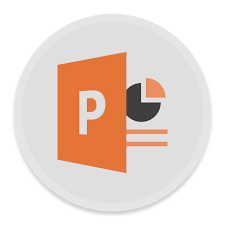


Best Assignment Help Writing Service To Suit All Your Needs
We are known to be amongst the top pioneers in offering end solutions for all Assignment writing requirements of students in Australia. Students rely on us for all their coursework completion tasks. We have been at the service of students throughtout the last many years. Assignment Help services will ease all the complex coursework tasks at affordable rates. Students call us the most reliable source to acquire Assignment Help Service In Australia!! Assignment Help Sydney Australia is here to put an end to all your academic homework paper writing work requirements. We have subject matter experts & native writers who excel at delivering world class superior quality results within the given due-date. Our services come with the guarantee of 100% error free & plagiarism free content in all the documents written by our writers. Are you facing difficulties in completing your assignment papers like Essays, Dissertation Papers, Thesis Papers, Research Papers, Term Papers, Case Studies & all other homework writing papers assigned to you at school or college? If yes, then you are at the right place. Your search ends here with our expertise. Amidst the daily busy schedule in the life of a student, they are left with little to no time for completing the assignments & homework papers. In addition to this, the pressure of submitting the assignments within the defined due dates makes the process even more stressful for the students. They are loaded with coursework related tasks along with many other extracurricular activities as well. This is your opportunity to relieve yourself from the stress & pressure of submitting high quality assignments & acquiring top class A grades in all semesters. There are many subjects & related topics that require your commitment at all academic levels. Your professors analyze your academic performance on the basis of the quality of your assignments & homework papers. This is why we understand the importance of submitting high quality assignments & homework papers in all semesters.
Worry not!! The only objective of our Assignment Writing Help Service in Sydney Australia is to help students overcome all the difficulties they face with respect to their coursework completion tasks.
From over years, our expert native academic writers are recommended & trusted by students in Sydney Australia due to the superior quality of our assignments & the impeccable assistance provided to each student. Students rely on our services due to the highest level of authenticity & credibility of the content included in our assignments & homework papers. Our experts go beyond any limitations to deliver results that exceed expectations of the students who hire our services. Acquiring our academic & coursework writing services will never be heavy on your pocket as we have formulated all the prices in an affordable & reasonable rates so that all students can afford them. This is because our aim is to help students score higher A+ grades rather than earning profits. We are known as the most appropriate solutions providers when it comes to solving all the issues of students pertaining to assignment & coursework paper writing tasks. From the time we started untill now, through the hardwork & persistance of our expert writers we have successfully managed to build trust & high level of goodwill amongst all students from different universities & colleges. We work with an objective of delivering top notch quality assignment papers so that students are able to submit assignment papers within the specified duedates to avoid delayed submission. Our Motto & Objective behind offering assignment writing help & coursework help to students: We like to call ourselves as the pioneers of serving top class assignment writing help solutions to students irrespective of the subject or topic assigned to them at any semester level. We work with the objective of eliminating the pressure & stress felt by students so that they are able to concentrate on other academic tasks as well. We have subject matter native expert writers with years of experience & working knowledge in all subjects & topics taught in the universities & colleges. They are one-stop solution to all your assignment & coursework writing issues. You can approach our experts at any given point of time through our 24/7 customer care helpline & our live sessions with them.
Our Services Include Writing
✔ Dissertation
✔ Report
✔ Research Paper
✔ Term Paper
✔Course Work
✔ Speech
Why choosing us is the best decision you can make??
Are you wondering as to why you should choose our services when there are so many other service providers available online? This is a common doubt that might arise in the mind of any student. When you approach an online service provider for assignment writing help services, authenticity & reliability of the content remains the biggest concern. The following advantages of our services will help in giving you a better clarity.Here are some factors that set us apart:
✔ 100% Error-less & Plagiarism Free Content
We believe in offering only original & genuine content in all our assignments & coursework papers. Our expert writers create content which is error less & authentic in all terms. We make sure that the document is original by passing it through varintous plagiarism tests. We are against the practice of duplication & copying content from one source & using it in our papers. This takes you closer to submitting top quality assignment papers that surely fetch you the desired grades.
✔ Superior Quality Of Assignment & Coursework Papers:
We have a team of subject matter expert native academic writers who are exceptional at their job. All assignments written by them are of superior quality & are offered at affordable rates so that they are accessible by every student. The vast knowledge of all our writers helps students in understanding the subject & topic in a better way.
✔ On-Time Delivery of all Assignment & Homework Papers:
We understand the importance of time management in the life of a student. Our writers work on the assigned assignments with the view of submitting them within the specified deadlines. Another reason for this is that the students are left with ample of time incase they want to get any changes or edits done in the assignment paper written by our experts. You will never face the consequences of delayed submissions once you select us!!
✔ Access to Unlimited & Free Revisions of the Assignment:
It is common for students to feel the need of getting the written assignment revised as per their requirements. Understanding this, we give you the advantage of accessing free revisions to include all your suggestions & edits into the assignment paper.
✔ Secure & Safe Payment Methods & Gateways:
Payment security is one of the top-most concern of any student while seeking help from an online service provider. To give you an experience of hasstle free payment & order placement process through our services, we have adopted the best & most secure payment gateways. All the personal information regarding the account, debit card details, credit card details or information about your paypal account is safe & secure with us. Your information is never inshared with any 3rd party or unauthorized source.
For more details, you can contact our customer care support team who will guide on the needful concerns. We are available for your assistance round the clock. .
What sets us apart from the other Online Assignment Help Service Providers in Sydney Australia?
✔ Adherence to all the University Guidelines and Standards:
All our Expert writers are Ph.D degree holders with experience in all the major subjects & their related topics as taught in the university & colleges. They have served as professors in all the reputed educational sources & hence they are well aware of all the guidelines & standards as set by the respective university ot college. This is why you can relax about all the concern of submitting assignment papers that are accepted by the authority.✔ Affordable and Reasonable Prices for all Assignment Help Services:
Students are often seen struggling with expenses to balance their academic & personal needs. They also indulge in part time jobs to meet this requirement. We give you all our expert academic assignment writing help at pocket friendly rates so that all students are able to take advantage of our expertise.✔ 24/7 Student Friendly Customer Care Assistance:
Students can have doubts at any given point of time & hence we are available for assistance round the clock. We have a team of experienced & trained customer support team who is will to clear all your doubts as & when the arise.Assignment Help Reviews
I am very satisfied with the quality of assignments written by the experts at Assignment Help Firm. They have the best team of subject matter expert academic writers who helped me understand the topic better. I will highly recommend their assignment writing services to all students in need!!
- Hari Singh
★★★★★
Assignment Help Sydney has the most competent solutions to meet all the assignment & coursework writing requirements of students. I got my assignments written at affordable rates but with no compromise on the quality. They also delivered the assignments on time which eliminated my concern of delayed submissions. Your search for expertise ends here for sure!!
- Supriya
★★★★★
With so many assignments & coursework tasks assigned every day, i was very stressed about completing the assignments on time as i had other extra curricular activities to concentrate on as well. This is when a friend recommended Assignment Help Writing Firm to me. I am so glad that i choose them as my academic partners. Their solutions are at par with other service provdiers.
- Kritika
★★★★★
I have always been suffering from poor grades in semesters due to delayed assignments which did not match the expectations of my professors. But things changed when i started getting help from Assignment Help in Sydney Australia. They gave me expert assistance at reasonable rates which did not hamper my nudget at all.
- Peter
★★★★★
The best thing about Assignment Help Service is their student support. Their experts are available 24/7 for clearing all the doubts pertaining to the subject or topic. They also helped me acquire deeper understanding of the subject. If you are searching for reliable source to get assignments written, then this is where you should go.
- Samantha
★★★★★
Sometimes, the assignments written by online service providers required changes & amendments but not everyone allows this. This is where Assignment Help Firm stands apart. They offer free revisions for the assignment written along with live chat sessions with the subject matter experts. I am extremely satisfied with the results of their solutions.
- Alex
★★★★★
I no longer worry about my assignment & coursework writing papers because i have Assignment Help for my assistance. They are my one-stop solution for all academic requirements. Without spending alot of money i got top notch quality assignments. Keep up the good work!!
- Jennifer
★★★★★
They are very easy to deal with. They understand your requests clearly and then deliver exactly what you want. The customer service team is amazing and very friendly. I highly recommend it to all students!
- Gurpreet
★★★★★
"I hardly have time for assessments as I have many other academic tasks to take care of and I also work a part-time job. So, I contacted AssignmentFirm.com and they were able to help me with my reports and papers. I have been using their services for more than two years now and am extremely satisfied"
- Pranav
★★★★
I was very impressed with the quality of writing. They have the best subject matter experts for writing assessements. They have helped me improve my grades consistently
- Jonathan
★★★★★
They are very punctual. If they say they will deliver the work on a certain date, they will do it. You never have to worry about missing a deadline. I can focus on other tasks peacefully knowing that the guys at AssignmentFirm.com are working on my order and will deliver the same on time
- Rhonda
★★★
The rates are very affordable. I do not have to shell out a huge sum of money every time I need to get an reports done. It is ideal for students who are looking for cost effective solutions to get their papers and reports written
- Connor
★★★★★
They do not hesitate to revise the work whenever you ask them to. It is very important, as sometimes last minute changes are absolutely necessary with requirment. This is one of the reasons why I always choose AssignmentFirm over others
- Hira Shreshta
★★★★★

Follow the steps given below to place an order with our experts:
You can get your own expert writer by completing these steps quickly. Step 1: Fill the Order Form The first step is to fill in the Order Now form with all the correct details. You will find this on our homepage. Here, you have to provide only the accurate details to avoid any issues in future. The results will be as per your requirements only when the details are proper. Step 2: Review our Affordable & Free Price Quotation Secondly, we pass on your assignment writing request to our subject matter experts. They pass your request through a price calculation process keeping in mind all the requirements of the students. Once the final quote is decided, it is conveyed to the respective student. Step 3: Pay only Half To move further, you will have to make the half payment for your assignment order. You can adopt different payment methods like debit card, credit card, paypal account which are safe & secure. Step 4: We Write the Assignment We assign your assignments to one of our expert academic writer. We make the selection on the criteria of appointing the task to the most appropriate person. Once our expert writer finishes the assignment on time, the paper undergoes various quality control tests. Before delievering the assignment to students, we make sure that the paper is completely genuine & error free. We are against the practice of plagiarism of all types. Step 5: We Deliver The Perfect Order After the written assignment passes all the tests & qualifies on all our standards of acceptance, we get it ready for delivery to the student. We make sure that the assignment is delivered well in advance of the deadline given by the student. You are also left with adeqaute time to ask for any changes or edits in the assignment. We also give you the access to unlimited free revisions. The assignment is as per the accepted guidelines of the university. After getting the final complete assignment, you have to make the remaining half payment. Isn't the process simple? There are many advantageous reasons of choosing our Sydney Assignment Help services.

Complete & All Inclusive Assignment Help:
If you are under the pressure of completing assignments & homework papers within the given tight deadlines? Are you searching for the most reliable source to help you with all your academic requirements then we are the experts. Our native writers put an end to all your assignment completion worries!!
Essay Writing:
Essays need to be highly logical with versatile vocabulary. We involve high creativity and impeccable structure to your essay. Our writers use only trustworthy sources for their research material, also ensure current and relevant information.
Research Paper Writing Help:
In order to submit a high scoring research paper, it needs to be well written, formatted & the main objective or the idea of research purpose should be presented clearly. The information should be accurate & trustworthy. Our experts give you best results under all conditions.
Expert Resume Writing Assistance:
Your dream job becomes a reality when your resume is strong & impressive. It needs to show all your academic as well as professional attributes in the most appropriate manner. We offer you customized resume writing services at affordable rates.
Management Assignments Writing Help:
Our Management Assignments are sure to exceed the expectations of your professors. Our experts have exceptional & vast domain knowledge in all the subjects & topics as taught in the Universities & Colleges in Sydney.
Marketing Assessment Writing
The only way you can score well in a marketing assignment is if you can sell your professor the idea. We can do just that and more for you. Our vast domain of technical know-how and knowledge base allows us to tackle every marketing papaers.
Thesis & Business Report Writing Help:
This is your opportunity to excel in the thesis papers as assigned to you & submit them well within the duedates. We have professional Business Report writing experts who will form top notch papers to help you score higher & acquire A+ grades.
Business Reports Writing
Business reports are highly professional. We do not mince words when presenting an idea to ensure good grades for you. You can depend on us to complete your business reports in time. We lets you deliver the best business report to secure the best grades.
Report Writing
Statistical and experimental data is used by our writers while creating your reports. You can depend on us to give you error free and relevant reports that will secure good grades regardless of institute or level of education.
Assistance with Powerpoint Presentations:
Our experts help you present the given topic along with the most appropriate visuals & graphics that make the powerpoint even more alluring & scoring.
Homework & Coursework Writing Help:
Our team of subject matter experts are well acquainted in all subjects & topics like Accounting, Finance, Law, Marketing, History, Economics, Information Technology, Nursing, Statistics, Science & many others.
Poster Presentation Help
Our creative writers are best in the industry. Your posters will surely stand out with relevant material and catchy titles. You can boast of well researched posters by expert service we offer. We ensure that each poster is well-researched.